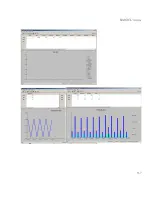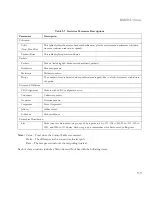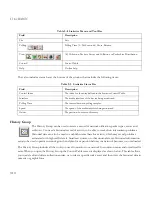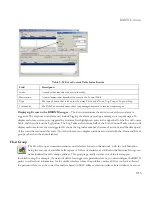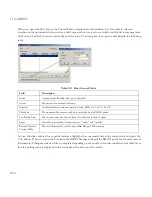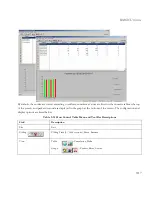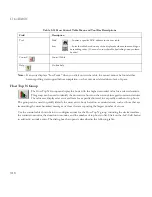
U
SING
RMON
9-20
Matrix Group
The Matrix group can maintain statistics on conversations that occur between each pair of hosts on the
network. This group can display statistics for traffic transmitted from any source address, traffic
received by any destination address, or traffic passing between any host pair. For example, if an alarm is
set off for a high watermark on traffic loading, you can use the Host Top N group to identify the hosts with the
heaviest load, and then use the Matrix group to analyze the conversations taking place. If a host is transmitting a lot
of packets, but not receiving many responses, this may indicate a faulty device. On the other hand, if a host is
receiving a lot of traffic but is not responding, either the host is overloaded and cannot keep up with the requests,
or the network is overloaded and should be segmented.
Use the control table shown below to configure entries for the Matrix group, including the device interface and
owner. Click on the
Add (Edit
) button to add (edit) an index entry. The dialog box that opens is described in the
following table.
Table 9-16 Matrix Control Table
Field
Description
Index
A number that identifies the row in the table.
Owner
The person who created this entry.
Interface
A media interface on the monitored device. (MIB-2: 1.3.6.1.2.1.2.2.1.2)
Table Size
The number of host entries added to this table by the RMON probe.
Summary of Contents for ELITEVIEW
Page 1: ...MANAGEMENT GUIDE EliteViewTM 6 20 SNMP Based Network Management Softwarefor Windows ...
Page 2: ......
Page 8: ...iv ...
Page 20: ...INTRODUCTION 1 4 ...
Page 66: ...NETWORK TOOLS 5 18 ...
Page 106: ...COLLECTING DATA WITH LOG MANAGER 7 22 ...
Page 121: ...RMON UTILITIES 9 7 ...
Page 156: ...TYPICAL ELITEVIEW APPLICATIONS A 8 ...
Page 180: ...TECHNICAL REFERENCES D 4 ...
Page 188: ...SPECIFICATIONS F 4 ...
Page 222: ...ERROR MESSAGES I 30 ...
Page 231: ......


